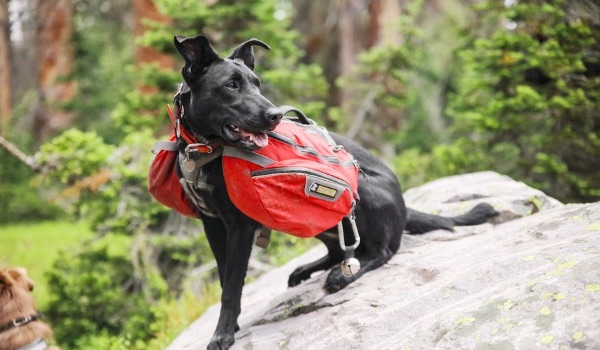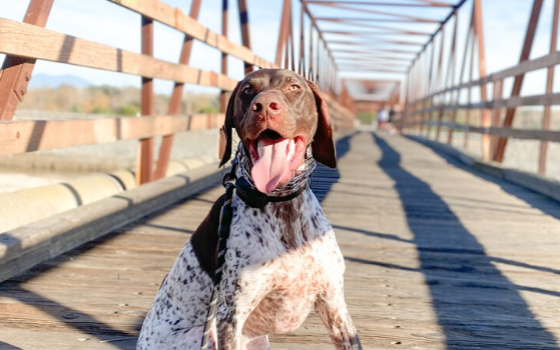If there is one thing certain in life, it is that life is not certain. Things happen and, more often than we would like, disasters happen. And while we cannot prevent them from happening, we can certainly prepare ourselves and those we love for when the time comes.
So what can you do? Well, the first step in disaster preparedness is putting together an emergency supply kit, typically filled with blankets, changes of clothes, food, water, and medical supplies.
Below, you’ll find a list of some recommended items to place in your kit to help keep both your loved ones and pets safe. Once complete, this kit should be stored in an accessible area.
Disaster Supplies for You and Your Pets
Human and Animal First Aid Kit
including items such as antiseptic wipes, gauze, tweezers, saline rinse, cotton pads, bandaging material, hydrogen peroxide, as well as any all medications needed.
If you are unsure of what else to include, consult with your doctor and veterinarian.
3-7 Days Worth of Pet/Human Food
be sure to rotate this food out every two months for freshness
Litter and Disposable Litter Trays (if you have a cat)
Fecal Waste Bags (if you have a dog)
Liquid Dish Soap And Disinfectants
Paper Towels or Rags For Cleaning Purposes
Disposable Trash Bags
Pet Feeding and Water Bowls
Extra Collars/Harnesses and Extra Leashes
Photocopies of Medical Records
Crate or Carrying Cage For Your Pet (preferably one for each)
Flashlight/Blanket
Extra Change of Clothes (for all members of your household)
It’s also incredibly important that all your pets wear their collars and tags at all times too – in the case that you get separated during a disaster. Tags should include your pet’s name, telephone number, and any urgent medical conditions. With this said, the ASPCA always recommends microchipping your pet as another form of identification should you get separated.
In addition to creating an emergency supply kit for both you, your family, and your animals, it is also important to set up an evacuation or shelter plan appropriate for the disaster you will potentially face.
Those you may experience most frequently or those you are at most risk to endure depend majorly on where you live. So it’s incredibly important to familiarize yourself with the hazards that can potentially hit your area and then formulate a plan to best increase your chances of comfort and safety.
Please keep in mind that you should always follow evacuation protocols set by your city authorities.
For those prone to earthquakes:
Many don’t know this, but a majority of injuries that occur during earthquakes are a result of shifting or falling household items, so it’s important to do an inventory of the potentially problematic items in your home – that way you’re aware of potentially dangerous areas when the time comes.
For those living in earthquake-prone areas, consider fastening shelves securely to walls and placing large/heavy items on lower shelves. Breakable items such as glass or antiques should be stored in cabinets or pantry with lockable doors.
It’s crucial that, in the case you aren’t able to evacuate your home safely during an earthquake, you pre-identify places in your home that could potentially protect your loved ones and pets if need be. These places include strong tables or sturdy pieces of furniture.
For those prone to tornadoes/hurricanes:
Tornadoes and hurricanes can be as frightening as they are deadly, so it’s important that you follow every safety measure if you live in an area where these disasters can take place. It’s also important that you bring your pets inside if there are storm warnings, as pets can easily become frightened or disoriented when left alone.
In the case that you cannot appropriately evacuate during one of these storms, you should familiarize yourself with your home and set a safe location – preferably at the lowest point of your home – to be your designated shelter.
Once you’ve decided on a location, it’s recommended that you structurally strengthen the area in any way possible, as this safe shelter is going to be the stronghold that keeps you, your loved ones, and your animals protected throughout the storm.
Seeing as both these storms involved strong wind and rain, please keep in mind that public water supplies and private wells may not be safe to drink during or after the storm. Plan for this and ensure that your emergency kit has at least 7 days worth of water for each person and animal.
For those prone to flooding:
For those familiar with floodings, you know just how quickly they can start, as well as how quickly they can become life-threatening. In fact, of all the natural disasters, flooding results in the most injuries and deaths.
Did you know that just six inches of moving water can knock you down? And only one foot of moving water can sweep your vehicle away?
If you live in an area prone to flooding, it’s important to learn and practice your city’s evacuation routes and plans. To prepare for a situation in which you are unable to evacuate, locate high-ground areas near you (like your roof) where you can find safety during the rising waters.
For those prone to wildfires:
Wildfires are just that – wild fires. They are not to be controlled and move swiftly across the land. When and if a wildfire threatens your area, the best possible thing to do is to evacuate early to avoid becoming trapped.
Be sure to drive slow and keep your headlights on if there is smoke, as it will disrupt your visibility.
In the case that you aren’t unable to evacuate, it’s important to make your home and surrounding areas as fire-resistant as you can. This means reducing the number of flammable materials around your home. When and if the time comes, a building should be your first choice for shelter if evacuation isn’t possible. Close all the doors and windows, but leave everything unlocked in the case you need to flee.
Disasters can and do happen. Believing otherwise is not realistic and can result in the injury, confusion, or separation of you, your loved ones, and pets
My mother once told me, “Better to have it and not need it, then not have it and need it.” Of course, she had been talking about her wallet at the time, but it applies to just about everything in life – including disaster preparedness.
It’s far better to be prepared for a storm that may never come, then to have a storm come and have nothing.
It’s better to have a disaster kit and not need it, then to not have a disaster kit and need one.
The idea of something happening to my dogs or loved ones during a crisis because of my lack of preparation doesn’t sit very well with me and I doubt it sits well with you. Like so many out there, my dogs are my life and at the end of the day, I fear not for what a disaster might to do to me, but what one might do to one of my animals.
While I can not control the world around me, I can give my dogs and myself the best possible chance in the case of an emergency. By following some of the recommendations above, so can you.
Learn more ways to keep our pets safe:













